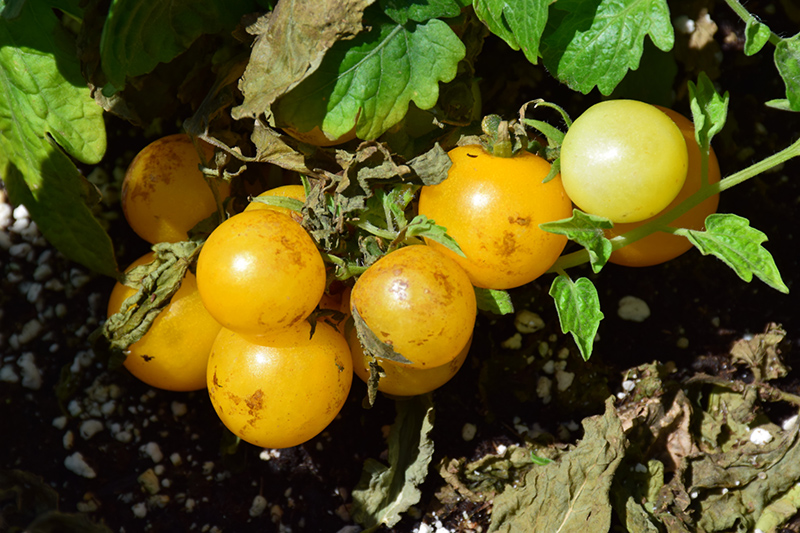>> Home
Little Birdy Yellow Canary Tomato
Solanum lycopersicum 'Yellow Canary'
Height: 12 inches
Spacing: 12 inches
Sunlight:
![]()
Hardiness Zone: (annual)
Group/Class: Cherry/Grape-Determinate
Brand: Sakata
Description:
A stunning compact and well branching variety that is perfect in hanging baskets and patio containers; early maturing and high yielding; produces small 1" round bright yellow fruit with a sweet and firm texture, ideal for snacking, salads and roasting
Edible Qualities
Little Birdy Yellow Canary Tomato is an annual vegetable plant that is typically grown for its edible qualities. It produces small clusters of yellow round tomatoes (which are technically 'berries') with yellow flesh which are usually ready for picking from early summer to early fall. This is a determinate variety, which means it bears a full crop all at once. The tomatoes have a sweet taste with a firm texture and a distinctive fragrance.
The tomatoes are most often used in the following ways:
- Fresh Eating
- Eating When Cooked/Prepared
- Cooking
- Baking
- Canning
Planting & Growing
Little Birdy Yellow Canary Tomato will grow to be about 12 inches tall at maturity, with a spread of 18 inches. When planted in rows, individual plants should be spaced approximately 12 inches apart. This fast-growing vegetable plant is an annual, which means that it will grow for one season in your garden and then die after producing a crop.
This plant can be difficult to integrate into a landscape or flower garden, and is best grown in a designated vegetable garden. It should only be grown in full sunlight. It does best in average to evenly moist conditions, but will not tolerate standing water. It is not particular as to soil pH, but grows best in rich soils. It is somewhat tolerant of urban pollution. This is a selected variety of a species not originally from North America.
Little Birdy Yellow Canary Tomato is a good choice for the vegetable garden, but it is also well-suited for use in outdoor containers and hanging baskets. It is often used as a 'filler' in the 'spiller-thriller-filler' container combination, providing the canvas against which the larger thriller plants stand out. Note that when growing plants in outdoor containers and baskets, they may require more frequent waterings than they would in the yard or garden.
